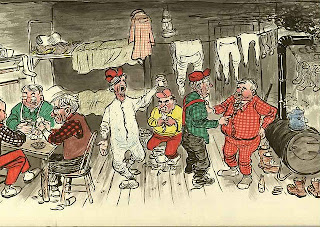Last week I was contacted by an individual who self-proclaims himself as an "avid traveler and foodie" to do a guest post on Nutrilicious. Naturally, anyone who can self-proclaim themselves to be a foodie is very close to my heart and at some point in my life I long to be an avid traveler, so he had my attention. His name is Cole Millen, and he wanted to give some tips that he has found helpful on how to eat healthy while traveling. Enjoy!!
How to Eat Right on the Go
Once again, summer vacation is
approaching, and thousands across the country are planning their next big
excursion. While most are aware that they will encounter the impulse to buy
food that lacks in nutrition, few will be prepared to resist the urge. By
following a few simple tips, however, anyone can have fun on vacation without
compromising good health. Pre-Flight Planning
Hotel owners realize that
vacationers and other travelers lack the accommodations to make a family meal
as they would at home. Therefore, thousands of people rely on fast food and
room service to satisfy their dietary needs. Unfortunately, this often leads to
the consumption of convenience foods high in fats and sugars and lacking
nutritional value. When making reservations, it is a good idea to inquire on
the room service menu and inform the staff of healthful requests. It is their
job to make their guests happy, so they will normally comply with special
requests. Furthermore, this will give the vacationer a good idea of which hotel
will prove the most accommodating during the length of their stay.
Also, inquiring about amenities
and other services that they have for your healthy lifestyle is very important.
Often time’s hotels mislead guests into thinking that their accommodations are
better than they actually are. For this reason I have found consumer reviews to
be the most helpful in finding the perfect spot. I recently traveled out west
and found a great site with a list of reviews for Las Vegas hotels and had
detailed information regarding restaurants, amenities, as well as things to do.
This was extremely helpful in finding the right stay for me and made my
vacation that much easier to remain healthy.
While these are all good
preliminary steps to take, the best way to stay healthy at the hotel is to
consider preparing food in the room. A crock-pot makes it possible to cook a
delicious, healthful, home-cooked meal at the hotel. In addition, oatmeal can
be easily prepared to start off the day using the coffee maker. The mini fridge
can be stocked with healthful alternatives to dining at restaurants every
night, saving the traveler money to spend on souvenirs and exciting activities.
Dining Out
While eating in the hotel room is
a sure fire way for a traveler to know they are staying
healthy on vacation, dining out does not have to be completely avoided, and
there are a few guidelines to follow to stay healthy while doing so. For
example, all-you-can-eat buffets should be strictly avoided as this limits the
traveler's variety.
It is also a good idea to shun
restaurants that feature mascots as they are normally more concerned with
driving traffic than preparing nutritious meals. Prior to arrival, it is
helpful to call ahead and inquire on the various menu items before deciding on
a particular restaurant.
Once in the restaurant, consumers
are encouraged to order brightly colored menu items. Furthermore, foods donning
names with adjectives such as battered, covered, creamy and crunchy should be
avoided. By exerting a little bit of effort, anyone can stay healthy on
vacation this year.

.jpg)























